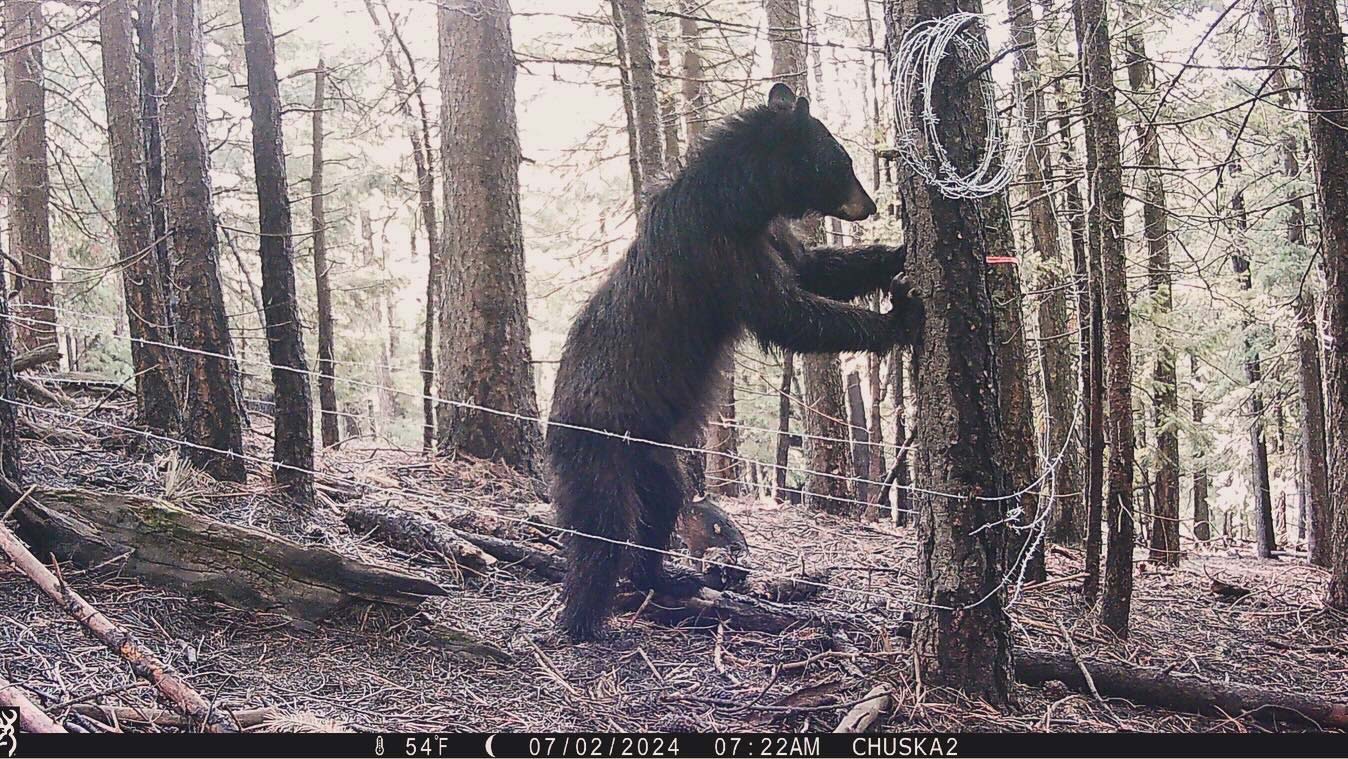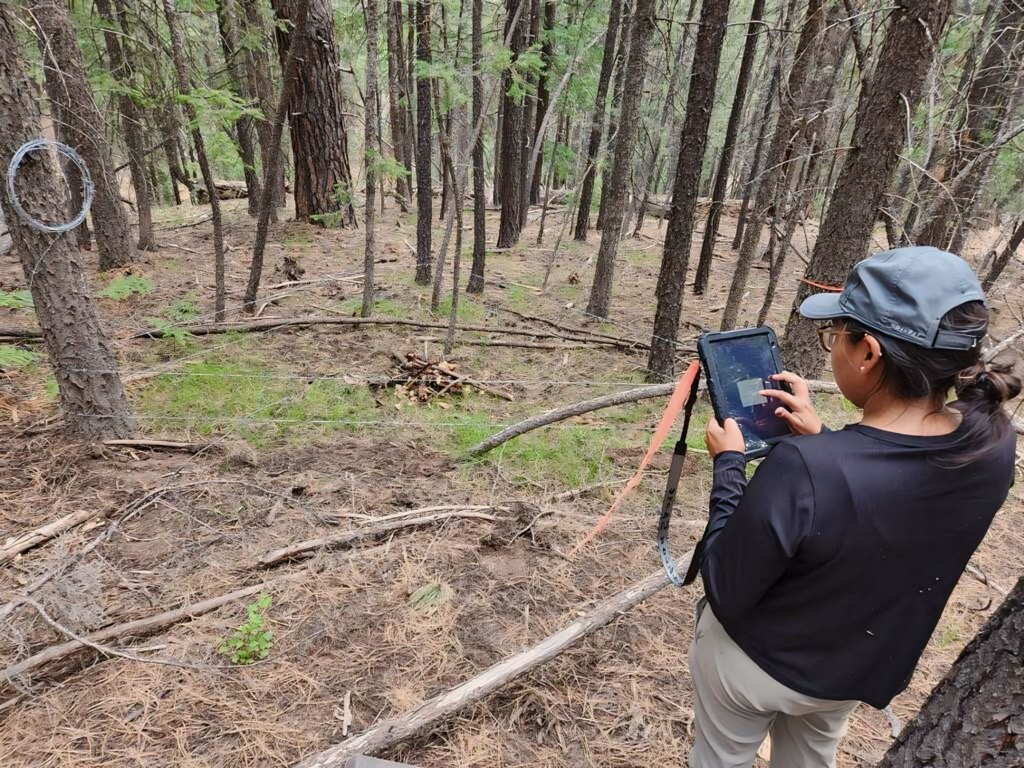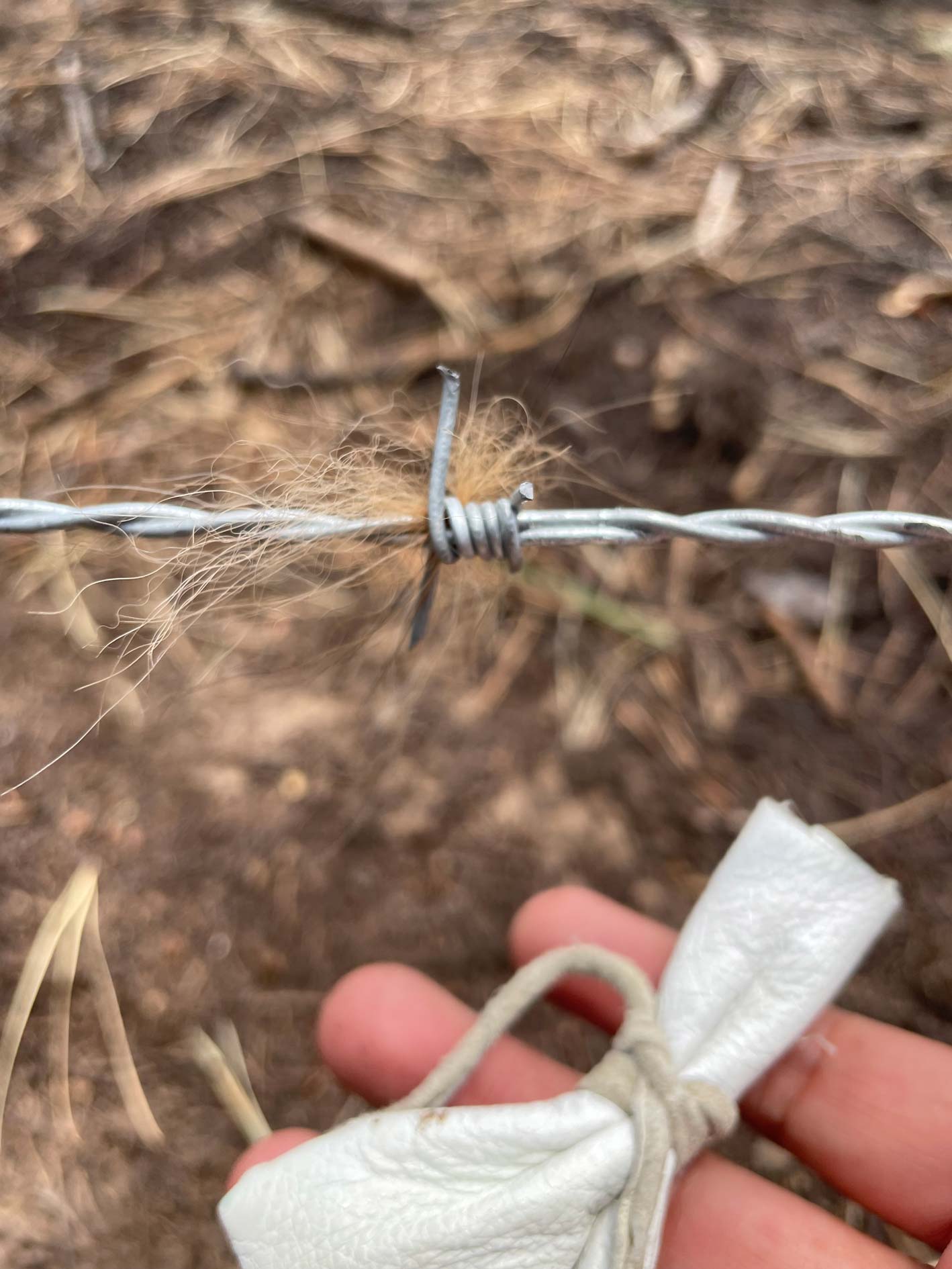 A black bear is caught on camera in the Navajo Nation. The U.S. Fish and Wildlife Service is funding a $100,000 grant to research human-bear interactions on the Navajo Nation.
A black bear is caught on camera in the Navajo Nation. The U.S. Fish and Wildlife Service is funding a $100,000 grant to research human-bear interactions on the Navajo Nation.
University of Arizona PhD student Deandra Jones is blending science with tradition while researching human-black bear interactions in the Navajo Nation.
With the increase of development, Jones wants to know how often the two interact to better inform the community and agencies about what to do around black bears.
“(The Department of Fish and Wildlife) had said that over the years, there have been increasing calls to the department about human bear conflict,” Jones said. “We need to be doing our part and being responsible; take part in trying to help protect them or preserve them in any way that we can.”
In early March, Navajo Nation President Buu Nygren signed a $100,000 grant from the U.S. Fish and Wildlife Service to fund Jones’s fieldwork through 2025. The last black bear study on the reservation was in 1980. But, different from then, Jones is interviewing Navajo tribal members to deepen her understanding of the bear.
In Navajo culture, bears, also known as shash, are considered to be fellow “beings” that share the land with people.
“They're humans. They're like us. There's something to be respected,” Jones said.
Considered to be spiritual guides, Navajo tribal members believe that bears have supernatural powers, like healing. However, out of respect, at a young age, Jones learned to keep her distance from sacred animals. That did not stop her curiosity, though.
 VIEW LARGER University of Arizona PhD student Deandra Jones is out in the field studying human-bear interactions on the Navajo Nation.
VIEW LARGER University of Arizona PhD student Deandra Jones is out in the field studying human-bear interactions on the Navajo Nation. “I was always that child that was asking my parents, ‘Why?’” Jones said. “Sometimes they'll tell me why, but sometimes they're like, ‘just don't do it,’ or ‘you're not supposed to ask why.’”
Despite how taboo it may be in Navajo culture, Jones found a way to navigate researching animals. Now, she incorporates traditional practices in her research when she feels morally strained. For example, on the advice of her family, Jones prays or holds a ceremony whenever she feels like her brain is foggy. Her family says it is because the bears know she is researching them.
“They're reminding you that you need to be respectful, and you need to be mindful of how you're approaching what you're doing with this research.”
As part of that respect, Jones offers corn pollen and a prayer in exchange for bear hair. Corn pollen, also known as tádídíín, is collected from the tassels of a mature corn plant and used in rituals to communicate with the Navajo Holy People.
 VIEW LARGER Corn pollen is offered as University of Arizona PhD Student Deandra Jones collect bear hair
caught on a barbed wire. The offering is a part of Jones's attempt to commemorate her culture and pay respect to the bear, which is considered sacred in Navajo culture.
VIEW LARGER Corn pollen is offered as University of Arizona PhD Student Deandra Jones collect bear hair
caught on a barbed wire. The offering is a part of Jones's attempt to commemorate her culture and pay respect to the bear, which is considered sacred in Navajo culture. Jones says that as long as there is cultural sensitivity, it is possible to be around these animals.
“Even in the beginning, when we were starting this research, we were going to trap and collar bears,” Jones shared. But she was apprehensive. That is when she asked, “Is there a way we could try to do this research where we're not directly interacting with them?”
By documenting these practices and their cultural significance, she hopes to carry forward the stories she grew up hearing.
“I want my kids and their kids to know these stories too. That’s why we’re trying to document some of these. It’s not going to be for nothing.”

By submitting your comments, you hereby give AZPM the right to post your comments and potentially use them in any other form of media operated by this institution.